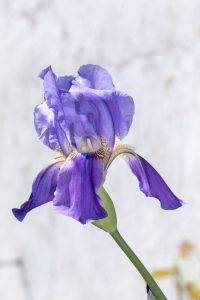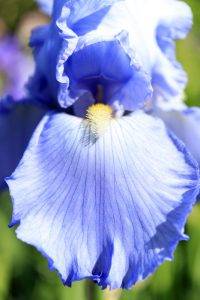
Gorgeous lady’s-flower iris-germanica
Description of a gorgeous lady’s petal:
Iris germanica L. german lily (German lily, German lily of the sword) Lily of the valley – Iridaceae A perennial plant that grows from a quarter of a metre to a metre tall. Its branched rootstock produces two rows of sword-shaped leaves. Stems have several flowers and are longer than the bracts. It is characterised by its large dark blue flowers, which are covered by two membranous bracts at the base. Of the bracts, the three outer ones are downward-bending and the three inner ones are upward-bending. A yellowish beard is visible in the centre of the bracts. The rootstock consists of long, compressed, branched, long pieces on top ; brown outside, brownish-white inside, fleshy.
Occurrence:
Its native habitat is the Mediterranean, but it is cultivated in many places, including our own, as a garden and drought plant.
Part to be collected:
The rootstock of the plant is collected, which is incorrectly marketed as radix iridis or radix irreos instead of rhizome.
Active substances:
Contains about 2% essential oil, a glycoside called iridine, about 16% starch, sugar and mucilage.
The most practical method of propagation is by cutting up the rootstock and planting, but it can be propagated by seed sowing with a planting plant. Yields 10-12 q (maza) of dry rootstock per acre.
Harvesting and drying:
Rootstocks 2-3 years old are collected in early spring or late autumn, cleaned, peeled and dried in an airy place at ordinary temperatures.
Processing and sale:
Only small quantities are used in medicine. Small sticks are carved from it and given to babies as violet root for teething. However, it has an important role in cosmetics, where it is essential in the production of perfumes for face and tooth powders. Source: Dr Ferenc Darvas and Dr Gyula Magyary-Kossa,Domestic herbs, their production, marketing, effects and medicinal uses

